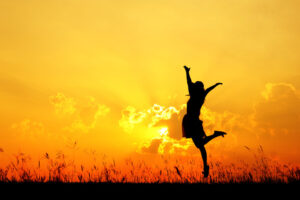Bouncing Forward to a new Normal
 As we begin our entrance into spring, the time that brings new energy, new life, and new hope, I find many of our educators wearier, more discouraged, more struggling than thriving. Each time I am blessed to work in our schools the heaviness is witnessed. In our recent Strengths Webinar on “Using our Strengths for our Wellness,” it was insightful and such a reminder of all we have within ourselves to come back better, maybe not the same way or to the same place, maybe to just another place with our resilience and purpose to reconnect to our mission.
As we begin our entrance into spring, the time that brings new energy, new life, and new hope, I find many of our educators wearier, more discouraged, more struggling than thriving. Each time I am blessed to work in our schools the heaviness is witnessed. In our recent Strengths Webinar on “Using our Strengths for our Wellness,” it was insightful and such a reminder of all we have within ourselves to come back better, maybe not the same way or to the same place, maybe to just another place with our resilience and purpose to reconnect to our mission.
As we know from the neuroscience research, thinking shapes reality. So, as we engage with our educators, we know their perceptions, beliefs, expectations, and assumptions set the stage for how resilient their minds can be. Many people think of resilience as “bouncing back,” as if things will go back the way they were before. Imagine squeezing a marshmallow, it sounds good but unlikely. What if we were to invite our teachers and leaders to “bounce forward” to a new place. Like this question, “What is the new normal you would like your resilience to bring you to?” Wonder what they might say and where they might go? And another question, “If not that, what other possibilities might there be?” to expand their awareness.
Expectations are predictions of the future. Sometimes we can only see one expected way. Perhaps the biggest challenge, or perhaps the bigger opportunity, of our role as coach leaders is to identify the assumptions being made. Such as, “If I take time for my self-care, I will not get my work done.”
Breaking these perceived assumed truths can move us from being stuck to resolution. In a recent article in Choice, the magazine of professional coaching, Jonathan Bates, PCC, offers a Resilience Triangle that makes visual what is required to make “bouncing forward” possible. Bates says, “The Resilience Triangle comprises Mindset + Energy + Action. It’s like a three-legged stool. Lacking even one leg, the whole stool won’t stand firm.”
Our mindset can become really set sometimes, like after the trauma of the last two years. The best way to become unstuck is creating a new awareness about possibilities. How we do that are the ways we listen and paraphrase and ask questions that bring some new thinking into the mind. My metaphor for Mindset is a windshield, it’s our view of our world and direction and it starts the motor for action and energy. And behold, we don’t have to give up our wellness or self-care. Remember what the flight attendants tell us, “Put on your own oxygen mask before you help someone else.”
Next time let’s dive into energy – our personal fuel tank.
Ref: Choice (vol. 19, No.4) Practical Resilience by Jonathan Bates, PCC, MSOD
